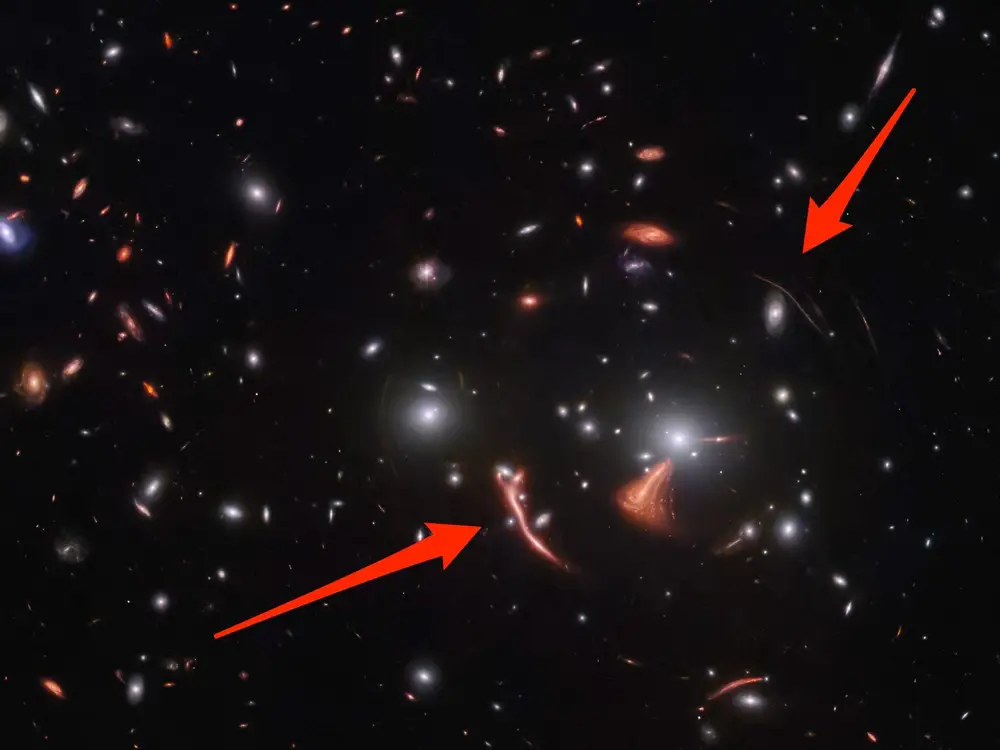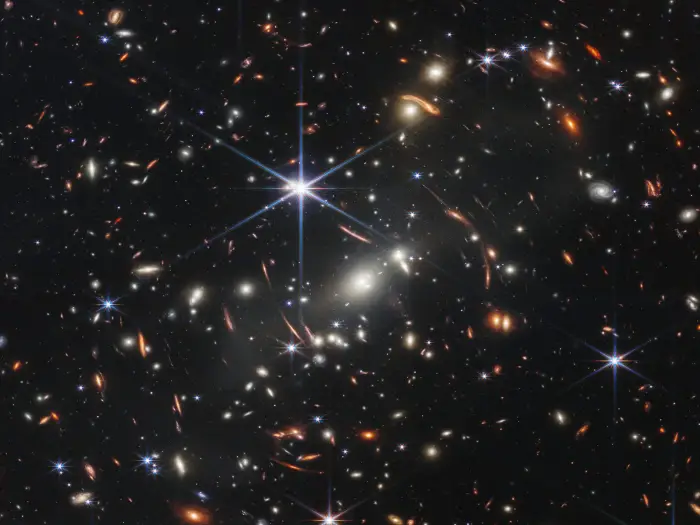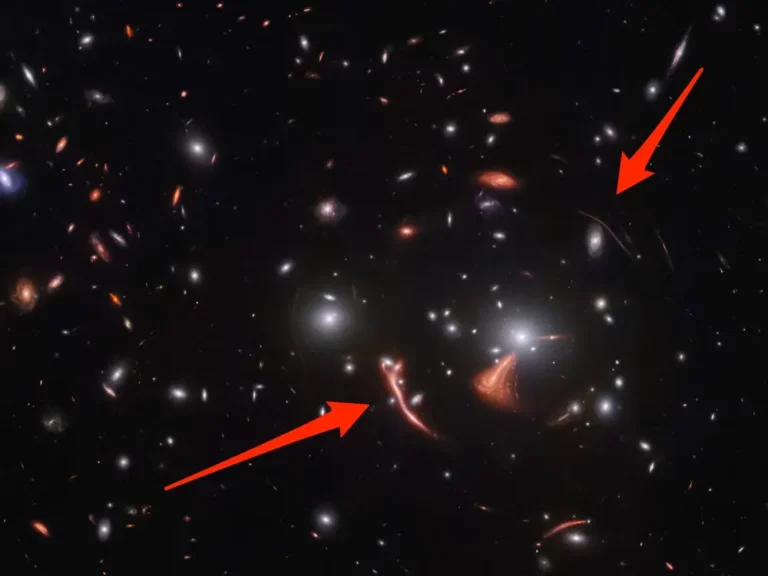The latest snapshot from the James Webb telescope reveals a galaxy cluster located 6 billion light years away, exhibiting a fascinating occurrence where gravitational forces bend the fabric of space-time in an intriguing manner.
NASA’s James Webb telescope has released new images of galactic “arcs and streaks” that showcase the captivating effects of a phenomenon known as gravitational lensing, which causes a literal distortion of space-time. According to the European Space Agency, gravitational lensing occurs when a massive celestial body creates a significant curvature in space-time, causing light to bend around it, almost like a lens.

Essentially, this creates a warped view of the galaxies and stars that lie behind the massive celestial body when viewed from a distance.
Warped tour…of space? ✨
See those strange arcs and streaks in this new Webb image? They’re actually distant galaxies, magnified and warped due to an effect called gravitational lensing: https://t.co/LwUv3MlSxu pic.twitter.com/KJpT0K6rCJ
— NASA Webb Telescope (@NASAWebb) March 28, 2023
In addition to its visual distortions, gravitational lensing also serves a magnifying function that has proven useful to scientists studying remote galaxies that might otherwise be difficult to observe. The recently released image from NASA’s James Webb telescope depicts the SDSS J1226+2149 galaxy cluster, located approximately 6.3 billion light-years away in the Coma Berenices constellation, as noted by the ESA.
Due to the magnifying effect of gravitational lensing, Webb’s primary near-infrared camera, NIRCam, was able to produce a clearer and brighter image of the Cosmic Seahorse galaxy. This particular galaxy is visible in the lower right quadrant of the photo as a “long, bright, and distorted arc spreading out near the core.”
The James Webb telescope, a groundbreaking instrument renowned for producing stunningly clear and awe-inspiring photographs of the vast expanse of the universe, captured a remarkable instance of gravitational lensing in a photo of the SMACS 0723 galaxy cluster last year. This particular “deep field” image, which NASA unveiled on July 11 as the first full-color photograph from Webb, depicted galaxies that are more than 13 billion years old.

In October, a collection of photographs was released, showcasing a group of stars located 5.6 billion light-years away. These stars, part of the MACS0647-JD system, were depicted with a distorted and magnified appearance, owing to the significant gravitational pull of the galaxy cluster MACS0647.
Do not forget to share your opinion with us to provide you with the best posts !




0 Comments